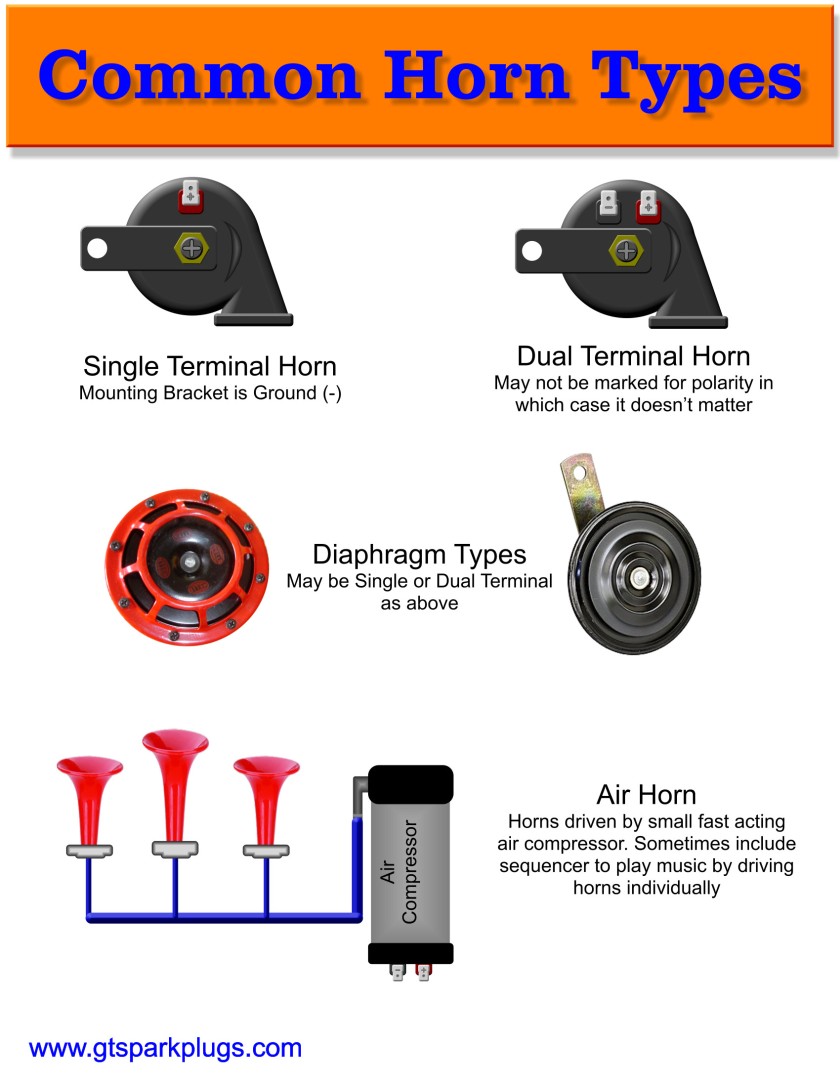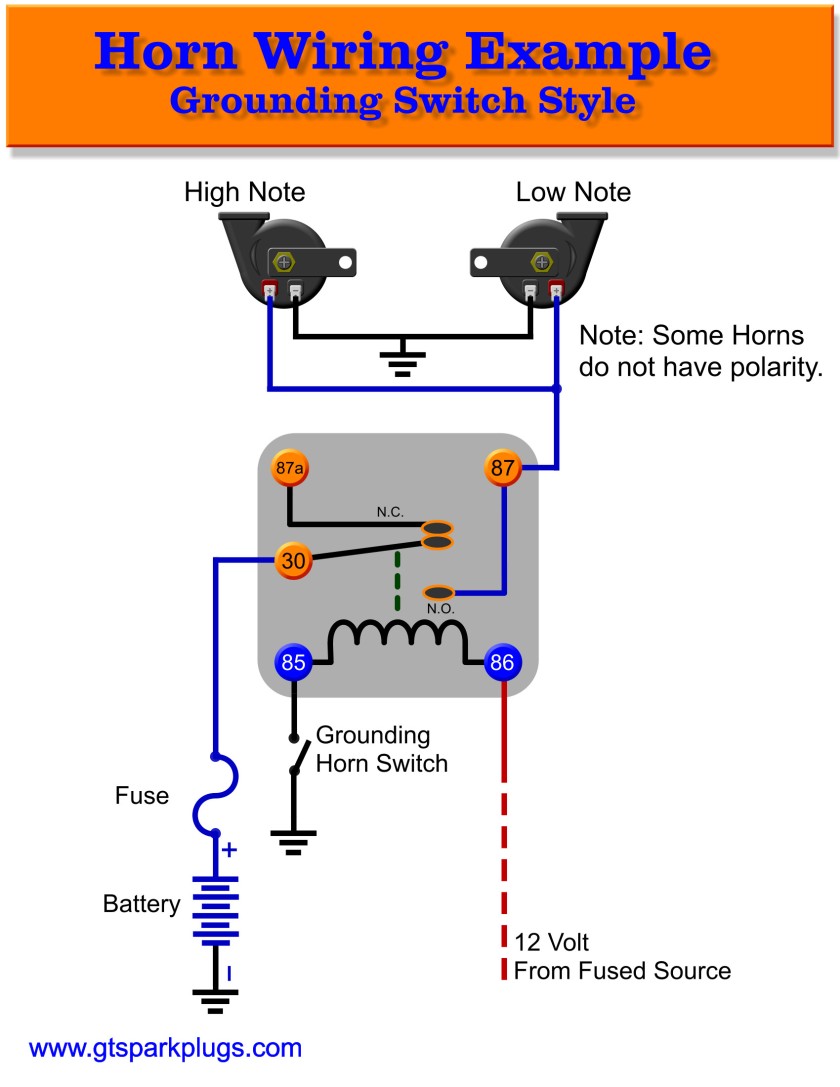Horn Amperage List
The current draw is in Amps for EACH / SINGLE / ONE horn unless otherwise specified! So if you are asking - 'How
many amps is this horn' this list might be helpful.
Hella Horns
Hella Electro-Mechanical
Hella Super Tone Horns 5.5 Amp
Hella Sharpe Tone Horns 2.5 Amp
Hella Trumpet Horn 6 Amp Each
Hella Universal Disc Horn 6 Amp
Hella Twin Tone Air Horn Kit 20 Amp
Hella Triple Tone Air Horn Kit 20 Amp
Wolo Air Horns
Wolo Air Horns
Wolo Model 400 Small Plastic Series Dual Air Horns 16 Amp
Wolo Model 400 Larger Metal Dual Air Horns 18 Amp
Wolo Model 419 Bad Boy Series 16 Amp
Seger
Seger Electro-Mechanical
Seger 45C Series 5 Amp
Seger 50F Series 5 Amp
Seger 55B Series 3.5 Amp
Seger 60 Series 6 Amp
Seger 62 Series 6 Amp
Seger 65 Series 6 Amp
Seger Air Horns
Seger 58KH Series 15-20 Amp
Seger 80KH - 82KH 21 Amp
Seger 82KM - 82KH 26 Amp
Fiamm
Fiamm Electro Mechanical
Fiamm AM-80S (includes Freeway Blaster) Series 6 Amp
Fiamm El Grande Twin Electric Horns 12 Amp (Pair)
Fiamm HK-9 Series Disc 5 Amps
Fiamm ATV Horn 8 Amp
Fiamm UTV Horn 12 Amp (Pair)
Fiamm 518 Series Hidden Horn 5 Amp
Fiamm 519 Series Hidden Horn 6 Amp
Fiamm Airtone Stainless Steel 6 Amp
Fiamm Airtone Stainless Steel Twin 12 Amp (Pair)
Fiamm Air Horns
Ultimate Blast 20 Amp
**Most have no current listed, plan on 20 Amp
Stebel
Stebel Electro-Mechanical
Stebel HF80 Series 4.5 Amp
Stebel TM80 Series 5.5 Amp
Stebel TM80 Magnum Series 6 Amp
Stebel Air Horns
Stebel Natilus Series 18 Amps
Stebel GP Series 16 Amp
Stebel VM 2 Series 18 Amp
Stebel AM 2 Series 18 Amp
Stebel Nautical Series NM2 18 Amp
Stebel BP Series 18 Amp
Stebel Musical MP Series 18 Amp
For Unlisted and OEM horns I would ASS-U-ME a 6 AMP rating for EACH horn.
Feedback or missing info please click the spark plug in the very upper right corner and send me a message!



